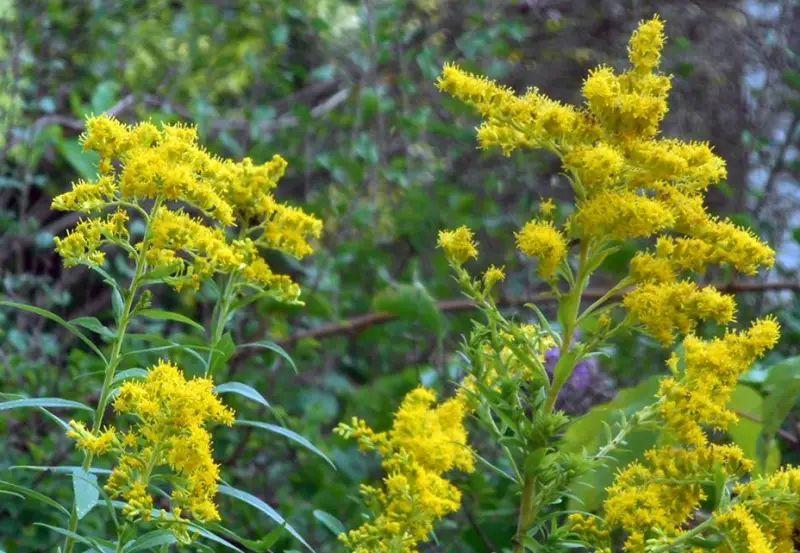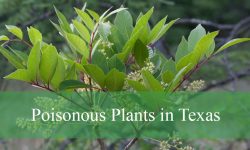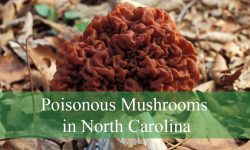Goldenrod plant (Solidago spp.) is a stunning, native North American perennial wildflower recognized for its tall, slender stature and fluffy golden flower spikes that brighten up any landscape. Though once dismissed as an invasive weed, this plant has gained appreciation among gardeners, thanks to its vibrant color and beneficial impact on local ecosystems. Goldenrod not only adds beauty to gardens but also serves as a favorite among pollinators, especially bees and butterflies.
This guide explores everything you need to know about caring for goldenrod, from planting to maintenance, so you can grow a lush and vibrant goldenrod garden.
Understanding Goldenrod: Key Characteristics

Goldenrod is part of the Asteraceae family and is characterized by its tall, slim growth and golden-yellow blooms. Here’s a quick rundown of its essential features:
- Botanical Name: Solidago spp.
- Family: Asteraceae
- Plant Type: Herbaceous, perennial
- Mature Size: 1.5–5 ft. tall, 1-3 ft. wide
- Sun Exposure: Full to partial sun
- Soil Type: Well-drained, tolerates average or poor soil
- Soil pH: Acidic to neutral
- Bloom Time: Summer to fall
- Flower Color: Yellow
- Hardiness Zones: 2-8 (USDA)
- Native Area: North America
Now, let’s dive deeper into how to cultivate goldenrod in your garden effectively.
Goldenrod Plant Care Guide
Goldenrod thrives when given the right conditions and attention. Here are essential guidelines to ensure a healthy, flourishing plant.
Planting Goldenrod: Choosing the Right Spot and Time
Goldenrod is best planted in spring or fall, taking advantage of cooler weather for root establishment. Choose a sunny location, as goldenrod performs optimally with ample sunlight, though it can tolerate some partial shade. Ensure the soil is well-drained; goldenrod will tolerate average or even poor soil but dislikes overly wet conditions.
- Tip: If you have taller varieties, staking is helpful to prevent plants from bending or flopping as they grow.
Watering: Finding the Right Balance
For newly planted goldenrod, weekly watering is essential to keep the soil moist but not soggy. Once the plant is established, it’s generally drought-tolerant, and additional watering is only necessary during periods of extreme dryness.
- Tip: Avoid over-watering, as mature goldenrod plants rarely need extra moisture.
Temperature and Humidity Requirements
Goldenrod is adaptable to a wide range of temperatures, thriving best between 65 to 80°F. With USDA hardiness ranging from zones 2 to 8, it is well-suited to diverse climates across North America. Goldenrod is also relatively indifferent to humidity, making it a versatile choice for most regions.
Soil Requirements: Lean and Well-Drained
Goldenrod grows well in well-drained soil with a pH that ranges from acidic to neutral. It can tolerate various soil types, including sandy, rocky, and clay soils. However, overly rich soil can lead to leggy growth, making the plant prone to flopping.
Types of Goldenrod: Choosing the Right Variety for Your Garden
Goldenrod species vary widely, offering options suited to different aesthetics and growth habits. Here are some popular types to consider:
- Solidago caesia: Known for its arching purplish stems and is less aggressive.
- Solidago odora (Sweet Goldenrod): This variety has anise-scented leaves and is well-suited to dry, poor soils.
- Solidago rugosa (Rough Goldenrod): A moisture-loving variety with a notable cultivar, ‘Fireworks,’ which has showy, arching flower heads.
- Solidago speciosa (Showy Goldenrod): Known for its dense clusters of yellow flowers.
- Solidago bicolor (White Goldenrod): A unique option with white blooms.
Pruning and Deadheading for Maximum Blooming
Regular pruning of goldenrod encourages a fuller, bushier appearance and can lead to more blooms. Deadheading, or removing spent flower heads, prolongs the blooming season and prevents excessive self-seeding. Here’s how to prune goldenrod effectively:
- Early Pruning: Trim stem tips early in the growing season to stimulate fuller growth.
- Deadheading: Regularly remove dead flower clusters to extend blooming into fall.
- End-of-Season Pruning: In late winter or after frost, cut plants back to a few inches above ground level.
Propagation Methods: Growing Goldenrod by Division or from Seed
Goldenrod can be propagated either by division or seeding.
Propagation by Division
- In spring, lift the plant from the ground with a shovel.
- Shake off excess soil and divide the rhizomes, ensuring each section has growth tips.
- Replant the sections, water well, and keep soil moist until new growth appears.
Propagation by Seed
- Goldenrod seeds require a cold stratification period, usually 60 days, achieved by sowing seeds outdoors in late fall or early spring.
- Alternatively, place seeds in a damp medium in a sealed bag in the refrigerator for 60 days, then sow in early spring.
Container Growing: Potting and Repotting Tips
If you prefer to grow goldenrod in containers, choose a pot at least 12 inches wide with ample drainage holes. Clay pots work well as they allow moisture to escape, preventing root rot. Ensure the potting mix is high-quality, and water regularly as container plants dry out faster than garden beds.
- Repotting Tip: When roots appear out of drainage holes or the plant is root-bound, either move it to a larger pot or divide and repot with fresh soil.
Overwintering Goldenrod: Preparing for Cold Weather
Goldenrod is hardy and requires minimal winter care. If grown in containers, winterize them to insulate roots. In garden settings, you can cut back stems after frost. This also prevents excessive self-seeding, keeping goldenrod growth controlled.
Managing Common Pests and Diseases
Goldenrod is relatively pest-resistant but may occasionally attract beetles, aphids, and gall-forming insects. Fungal issues like rust, powdery mildew, and leaf spot are also possibilities, though they typically do not harm the plant.
- Tip: Ensure good air circulation around plants and avoid overcrowding to minimize fungal infections. Use a fungicide if needed.
Encouraging Goldenrod to Bloom
Goldenrod is known for its late-season blooms that generally appear from mid-summer to fall. To maximize blooming, make sure the plant has ample sunlight and avoid excessive fertilizer. This native wildflower thrives with minimal care, so excessive intervention may hinder rather than help blooming.
Common Issues with Goldenrod
Despite its low-maintenance nature, goldenrod can sometimes present challenges. Here’s what to look out for:
- Aggressive Spreading: Goldenrod spreads via reseeding and underground rhizomes, which can lead to rapid expansion. To control this, divide your plants every two to three years or use barriers.
- Leggy Growth: Excessive fertilizer or overly rich soil can cause the plant to become leggy and prone to flopping. Grow goldenrod in lean soil to maintain a compact, upright appearance.
Conclusion: Embrace the Beauty of Goldenrod in Your Garden
Goldenrod offers a striking, golden display in any garden with minimal care, making it a gardener’s favorite. Its adaptability, hardiness, and support for pollinators add to its charm. By planting goldenrod in sunny areas, avoiding overfertilization, and managing its growth, you can enjoy a vibrant display of golden blooms year after year. Whether you’re adding goldenrod to a naturalized garden, a wildflower meadow, or a carefully curated bed, this versatile plant is sure to bring beauty and biodiversity to your outdoor space.






